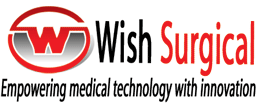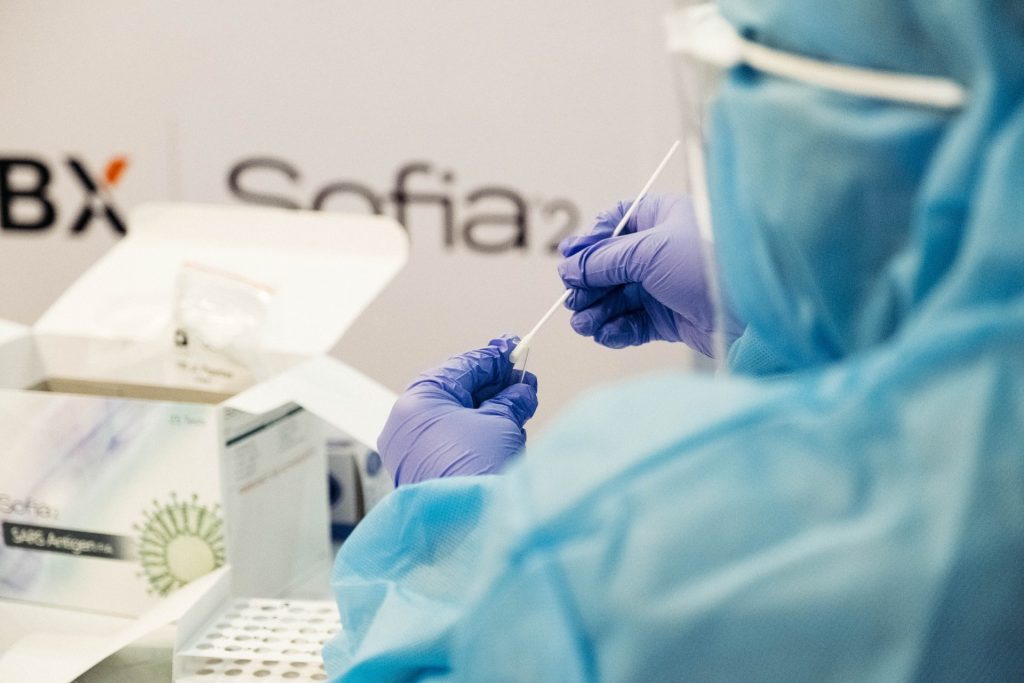Surgical Instruments
PLASTIC SURGERY MEDICAL INSTRUMENTS
MEDICAL INSTRUMENTS USED IN PLASTIC SURGERY
Plastic surgery has been around for over two hundred years, around the 16th century. The use of plastic surgery and its field has seen a massive surge in its importance as the world, and its populates are becoming increasingly aware of their appearance more than ever before. Hence it is a requirement of time to have new and improved techniques and instruments that can rectify such procedures. In general, instruments used in plastic surgeries are relatively more finer, precise and smaller because they are used specifically for esthetic purposes alongside physiological functionality. Some of the most common surgical instruments used are surgical scissors and knives, microvessel clips and clamps, surgical forceps, tissue forceps, etc. Here are some specific to the branch of plastic surgery ;
- Breast Dissectors ;
These are very important tools used in breast surgeries, such as augmentations, breast lifts, etc. They are used in surgeries to separate the tissue to expose the area affected by the breast that needs to be operated on.
- Breast Markers ;
They are also called areola markers and are used in surgeries that require nipple reconstruction. They are found in standard and variable sizes to best fit the patients’ morphology and look natural.
- Breast Reduction Compression Device ;
e Breast Reduction Compression Device (BRCD) is a single-use product that is made of a nylon strip enclosed in surgical grade silicone tubing. It is tied at the base of the breast in a loop and is used during reduction surgeries for marking them of desired tissues.
- Breast Retractors ;
They are used in the same way as breast dissectors and are used to separate tissues and expose the breast area.
- Breast Surgery Cleaning Tools and Replacement Parts ;
They are used as auxiliaries to help clean the actual instruments used and keep them from wearing off, such as Cleaning Brushes, Universal adapters for Breast Retractors, Endoscopic Scope Sheath Support, etc.
- Demarcators
They are instruments that are used to properly demarcate an area that needs to be operated on. They are used to make flaps such as
Marten Flap Forceps for accurate marking of Facial Flap,
Lockwood Abdominal Demarcator for marking large abdominal flaps,
Pitanguy Large Flap Demarcator,
D’Assumpcao Face Lift Forceps for a precise marking of dissected facial flaps for excision,
Deane Body Contouring Demarcator Forceps for accurate measurement of abdominal flap.
- Endoscopes ;
The use of endoscopes is a recent advancement in the field of plastic surgery. They are used both non-invasively and invasively in procedures such as facelifts, forehead lifts, abdominoplasty, and breast augmentation.
- Ear Lobe Clamp
Desmarres Chalazion Clamp, also called the Ear Lobe Clamp, is used for steady and sturdy retraction of the ear lobes in order to repair ones that have been torn or stretched. It can also be caused by faulty ear lobe piercing, gauging, and long use of heavy earrings over time.
- Engler Retractors
They are different kinds of retractors of different shapes and sizes that help to retract tissues for more easy access to the operating area.
- Epstein® Abdominoplasty Retractor
They are large-sized metal retractors that help to retract the flexible and elastic large tissues of the abdomen region.
- Face Lift Retractors
Fiber-optic Face Lift Retractors focus light directly into surgical areas without damaging the field of vision. The attached tube delivers light via a fiber cable from a source of light. This requires parts like Fiber Optic Headlights, Cables & Adapters, and a Fiber Optic Light Source.
- Flap Grasping Forceps
They are small diagonal-shaped heads with a handle and are used to retract flaps in the field of the operation without indenting the tissues or compromising the blood supply, unlike pointed ones.
- Forehead & Facelift Instruments
For example, scalp elevators, nerve hooks, dissecting forceps, facelift retractors are used.
- Gonzalez Gluteal Remodeling Instruments
Such as the gluteal retractor, dissector, and knife or blade are large instruments that are used in surgeries of the gluteal region.
- Hidalgo Lower Blepharoplasty Retractor
They are small retractors used in eye regions for eyelid blepharoplasty and are extremely precise and fine to protect the eye.
- Matarasso Lipo Roller
They are often used post-op but can be used during surgery for providing relief from issues like fluid congestion, swelling and itching, deficient blood circulation, seromas, and unwanted lumps.
- Microdissection Needles
They are used in electro-cautery, where a microscope is used to assist in ultra-fine dissection. These needles are used to focus single polar energy on the target tissue, hence achieving an accurate cut, minimal burning, and damage to surrounding tissues.
- Nasal Rasps
They are used to achieve cutting of nasal bones such as humps etc., during a rhinoplasty.
Plastic surgery has been around for over two hundred years, around the 16th century. The use of plastic surgery and its field has seen a massive surge in its importance as the world, and its populates are becoming increasingly aware of their appearance more than ever before. Hence it is a requirement of time to have new and improved techniques and instruments that can rectify such procedures. In general, instruments used in plastic surgeries are relatively more finer, precise and smaller because they are used specifically for esthetic purposes alongside physiological functionality. Some of the most common surgical instruments used are surgical scissors and knives, microvessel clips and clamps, surgical forceps, tissue forceps, etc. Here are some specific to the branch of plastic surgery ;
- Breast Dissectors ;
These are very important tools used in breast surgeries, such as augmentations, breast lifts, etc. They are used in surgeries to separate the tissue to expose the area affected by the breast that needs to be operated on.
- Breast Markers ;
They are also called areola markers and are used in surgeries that require nipple reconstruction. They are found in standard and variable sizes to best fit the patients’ morphology and look natural.
- Breast Reduction Compression Device ;
e Breast Reduction Compression Device (BRCD) is a single-use product that is made of a nylon strip enclosed in surgical grade silicone tubing. It is tied at the base of the breast in a loop and is used during reduction surgeries for marking them of desired tissues.
- Breast Retractors ;
They are used in the same way as breast dissectors and are used to separate tissues and expose the breast area.
- Breast Surgery Cleaning Tools and Replacement Parts ;
They are used as auxiliaries to help clean the actual instruments used and keep them from wearing off, such as Cleaning Brushes, Universal adapters for Breast Retractors, Endoscopic Scope Sheath Support, etc.
- Demarcators
They are instruments that are used to properly demarcate an area that needs to be operated on. They are used to make flaps such as
Marten Flap Forceps for accurate marking of Facial Flap,
Lockwood Abdominal Demarcator for marking large abdominal flaps,
Pitanguy Large Flap Demarcator,
D’Assumpcao Face Lift Forceps for a precise marking of dissected facial flaps for excision,
Deane Body Contouring Demarcator Forceps for accurate measurement of abdominal flap.
- Endoscopes ;
The use of endoscopes is a recent advancement in the field of plastic surgery. They are used both non-invasively and invasively in procedures such as facelifts, forehead lifts, abdominoplasty, and breast augmentation.
- Ear Lobe Clamp
Desmarres Chalazion Clamp, also called the Ear Lobe Clamp, is used for steady and sturdy retraction of the ear lobes in order to repair ones that have been torn or stretched. It can also be caused by faulty ear lobe piercing, gauging, and long use of heavy earrings over time.
- Engler Retractors
They are different kinds of retractors of different shapes and sizes that help to retract tissues for more easy access to the operating area.
- Epstein® Abdominoplasty Retractor
They are large-sized metal retractors that help to retract the flexible and elastic large tissues of the abdomen region.
- Face Lift Retractors
Fiber-optic Face Lift Retractors focus light directly into surgical areas without damaging the field of vision. The attached tube delivers light via a fiber cable from a source of light. This requires parts like Fiber Optic Headlights, Cables & Adapters, and a Fiber Optic Light Source.
- Flap Grasping Forceps
They are small diagonal-shaped heads with a handle and are used to retract flaps in the field of the operation without indenting the tissues or compromising the blood supply, unlike pointed ones.
- Forehead & Facelift Instruments
For example, scalp elevators, nerve hooks, dissecting forceps, facelift retractors are used.
- Gonzalez Gluteal Remodeling Instruments
Such as the gluteal retractor, dissector, and knife or blade are large instruments that are used in surgeries of the gluteal region.
- Hidalgo Lower Blepharoplasty Retractor
They are small retractors used in eye regions for eyelid blepharoplasty and are extremely precise and fine to protect the eye.
- Matarasso Lipo Roller
They are often used post-op but can be used during surgery for providing relief from issues like fluid congestion, swelling and itching, deficient blood circulation, seromas, and unwanted lumps.
- Microdissection Needles
They are used in electro-cautery, where a microscope is used to assist in ultra-fine dissection. These needles are used to focus single polar energy on the target tissue, hence achieving an accurate cut, minimal burning, and damage to surrounding tissues.
- Nasal Rasps
They are used to achieve cutting of nasal bones such as humps etc., during a rhinoplasty.

